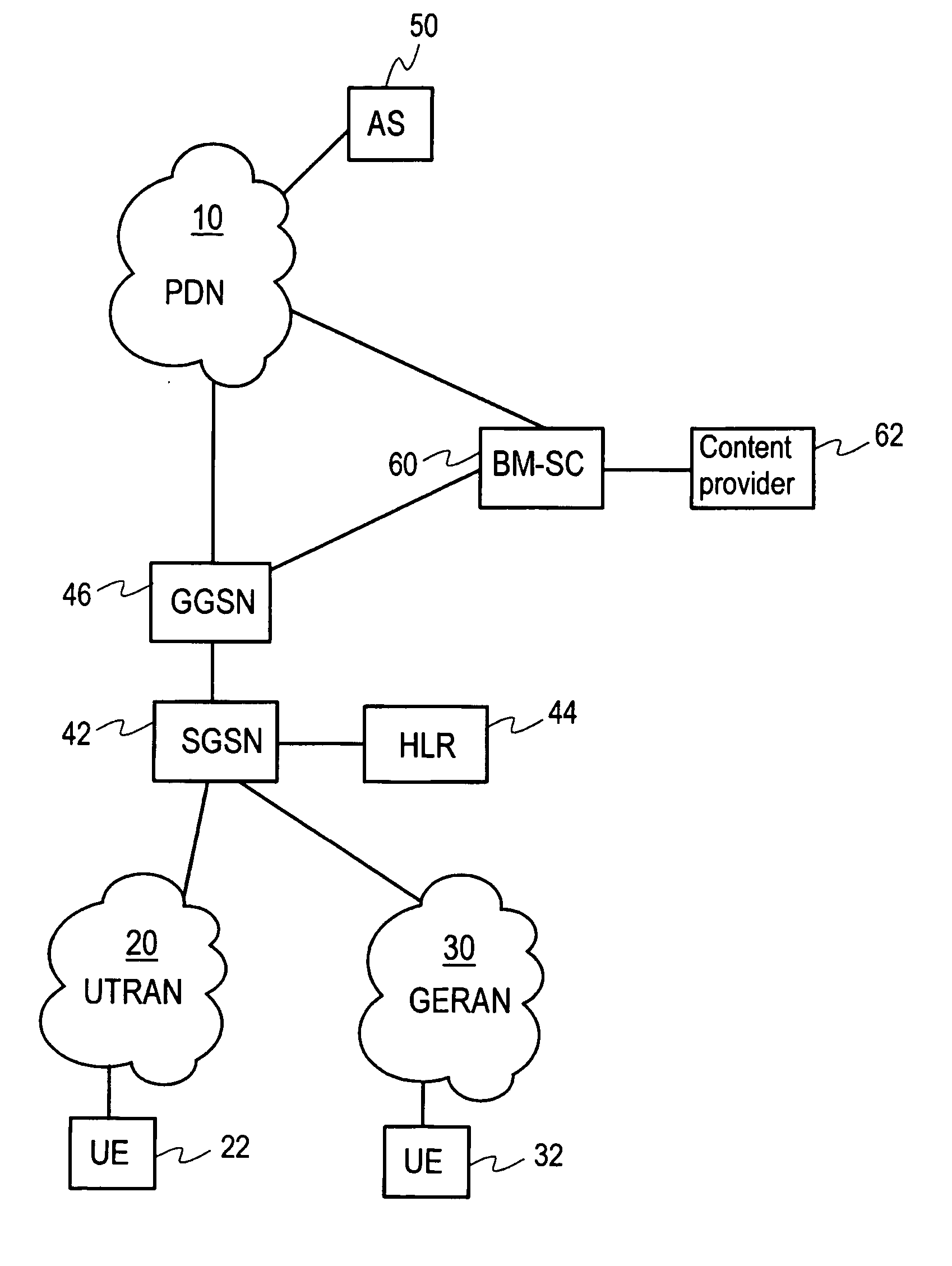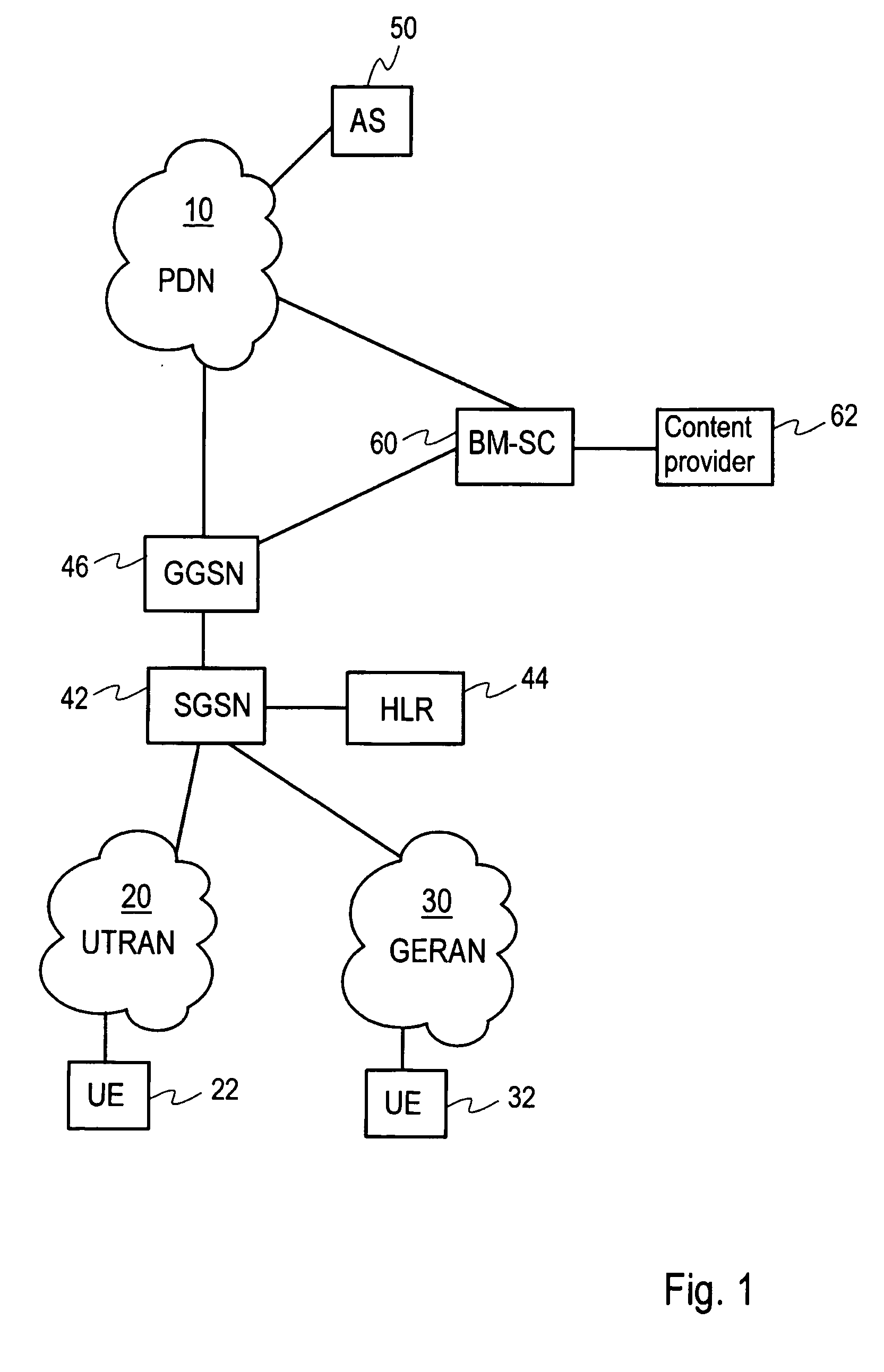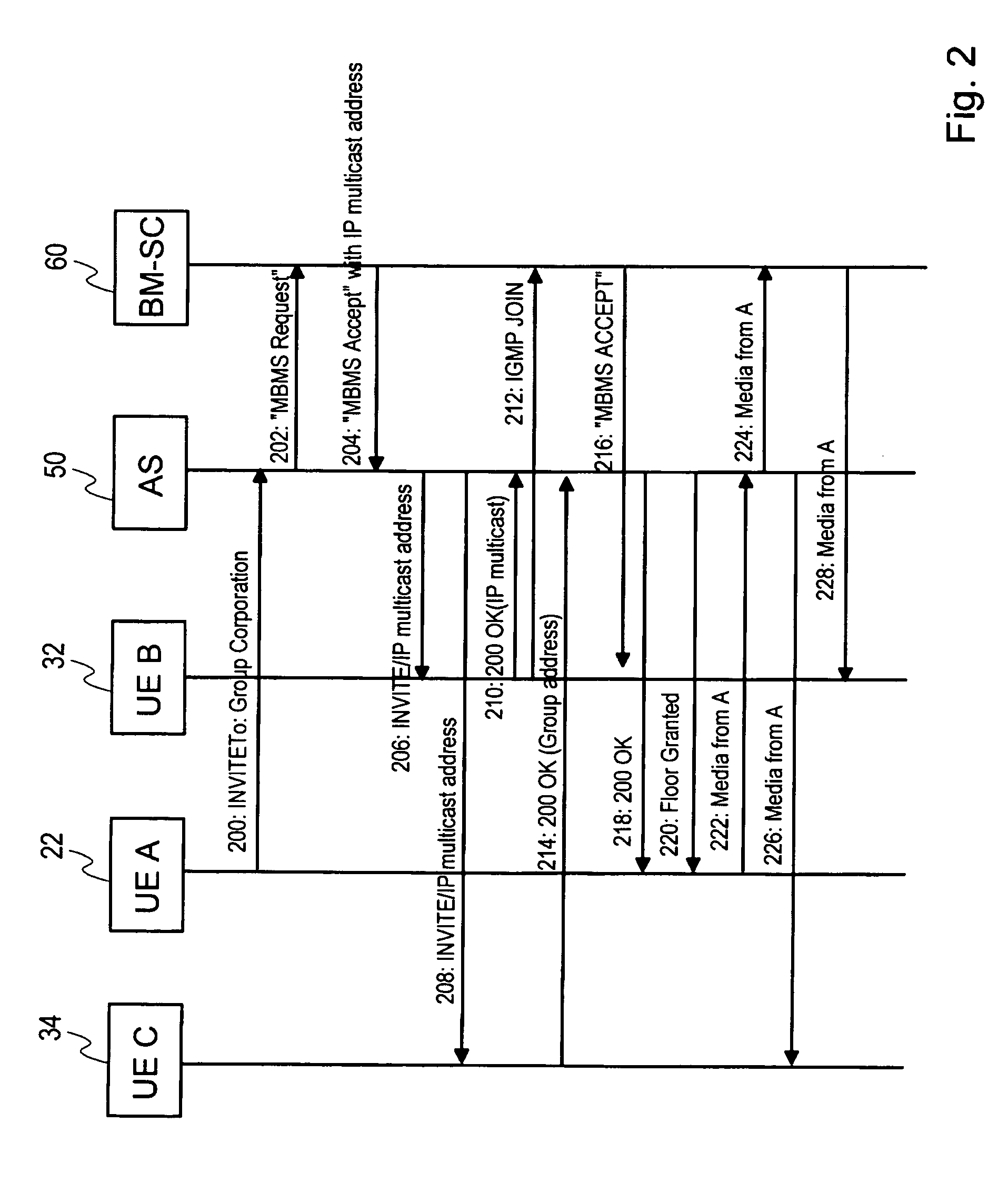Transmitting data to a group of receiving devices
a technology of receiving device and data, applied in the field of communication systems, can solve the problems of application server operating beyond the cellular network, unable to see cellular specific addressing, and particular cells may be crowded,
- Summary
- Abstract
- Description
- Claims
- Application Information
AI Technical Summary
Problems solved by technology
Method used
Image
Examples
Embodiment Construction
[0021] Reference is made to FIG. 1 showing an example of a network architecture in which the embodiments of the invention may be implemented. In FIG. 1, a public data network (PDN) 10 is provided for offering data services. An example of the PDN 10 may comprise, but is not limited to, the Internet Protocol (IP) Multimedia Subsystem (IMS). The IMS uses the Session Initiation Protocol (SIP), which is an application layer control protocol defined by the Internet Engineering Task Force (IETF) for creating, modifying and terminating sessions with one or more participants. The SIP is defined in the document RFC 3261 “SIP: Session Initiation Protocol”. The embodiments are mainly described referring to the IMS, but the same idea may be implemented with other communication systems as well.
[0022] In a SIP-controlled network, Uniform Resource Identifiers (URIs) are used to identify different types of actors in the network. Typically a URI points to a registered user identity of an individual ...
PUM
 Login to View More
Login to View More Abstract
Description
Claims
Application Information
 Login to View More
Login to View More - R&D
- Intellectual Property
- Life Sciences
- Materials
- Tech Scout
- Unparalleled Data Quality
- Higher Quality Content
- 60% Fewer Hallucinations
Browse by: Latest US Patents, China's latest patents, Technical Efficacy Thesaurus, Application Domain, Technology Topic, Popular Technical Reports.
© 2025 PatSnap. All rights reserved.Legal|Privacy policy|Modern Slavery Act Transparency Statement|Sitemap|About US| Contact US: help@patsnap.com



